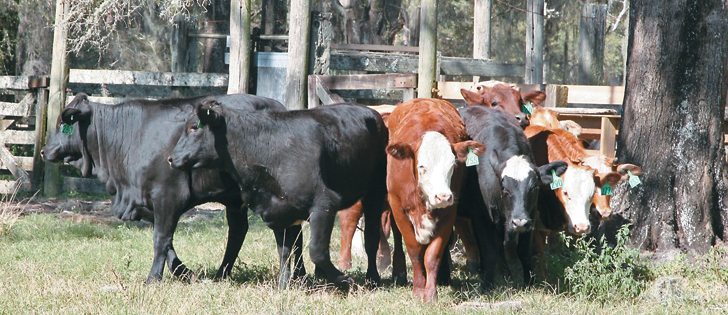Study shows bigger isn’t better when it comes to a young female’s development and conception rates
Collective wisdom says replacement heifers need to reach 60 to 65 percent of their mature body weight at the start of the breeding season.
Heifers that are lighter at weaning or did not gain enough weight from weaning until breeding may not cycle at the desired time.
Recent research trials at the Western Beef Development Centre suggest a lower body weight has no major effect on these young females’ ability to achieve puberty, conceive and raise a healthy calf.
It requires careful management during the development stage to make sure these youngsters get enough protein and high quality forage during the breeding season, said Bart Lardner of the centre.
Read Also

Charges laid after cattle theft
Saskatchewan RCMP lay two charges against a man after six cattle went missing.
“The beef industry is notorious for being set in tradition,” he said at the beef cattle conference that the University of Calgary’s faculty of veterinary medicine organized in Calgary June 18-19.
Some heifer development programs make the mistake of thinking that bigger is better, so these females end up fat and fail to conceive a second time, he added.
Fat collects in the heifer’s mammary area and displaces milk tissue so that it does not produce enough milk.
Researchers looked at the success of heifers if their body weight was 55 to 62 percent of mature weight.
British breeds weigh 650 to 750 pounds at puberty while Continental types are 750 to 800 lb.
Lardner said it is important for individual operations to know the weight of mature cows for comparison purposes.
“As a producer you really should know your mature body weight of your herd,” he said.
“You need a scale on your farm or ranch. Don’t guesstimate.”
He said the researchers studied the merits of turning cattle out to alternative extensive grazing systems that use less feed instead of feeding heifers in dry lot systems when trying to achieve or exceed the target weight and maximize pregnancy success.
The heifers were monitored to assess how much they ate and gained.
Their diets also met or exceeded National Research Council requirements for energy and protein to make consistent gains.
The results showed that heifers that reach less than 58 percent mature body weight by breeding do not display impaired reproductive performance.
They had the same pregnancy rates as heavier females and their calves achieved the same weaning weights.
The conception rate for the second pregnancy was normal at 94 to 97 percent.
The complete study can be viewed at www.wbdc.sk.ca.


















